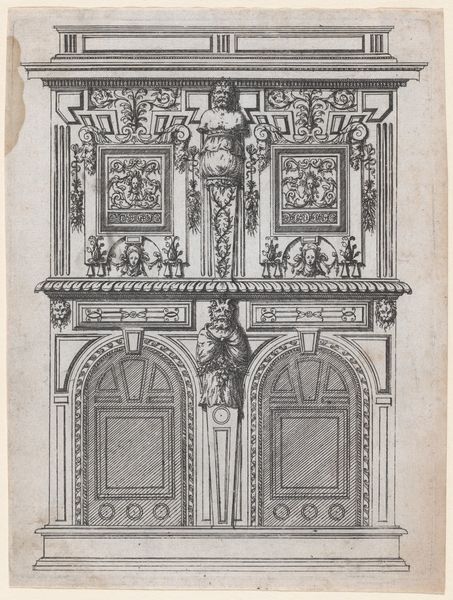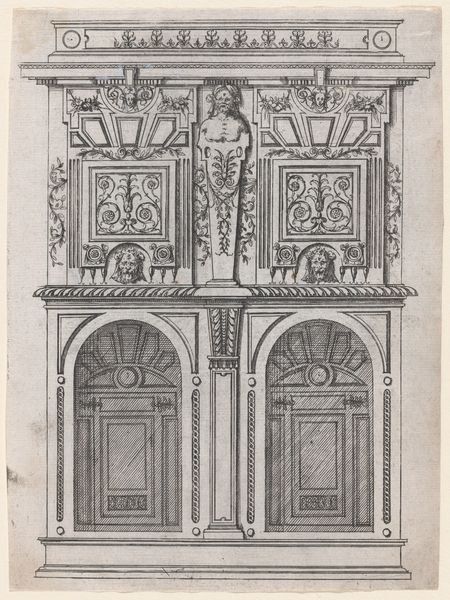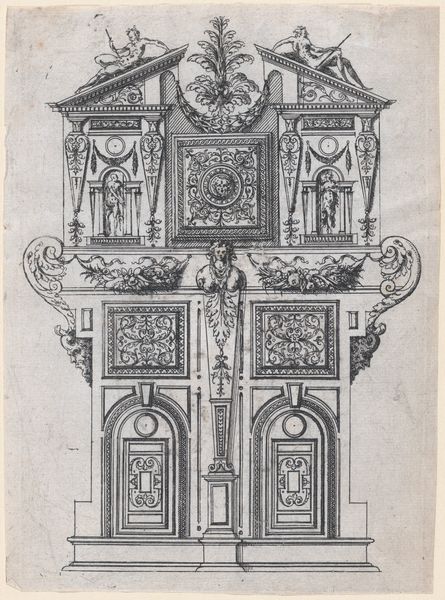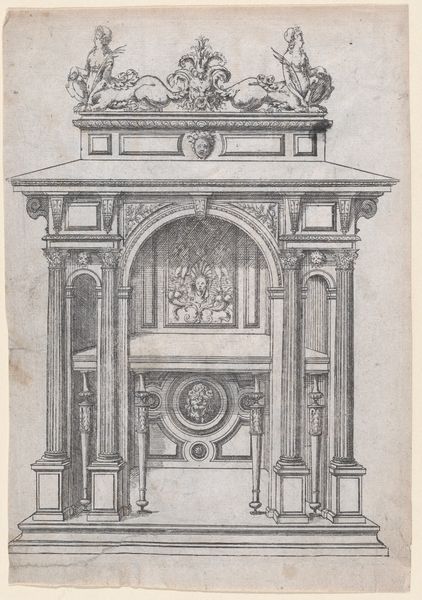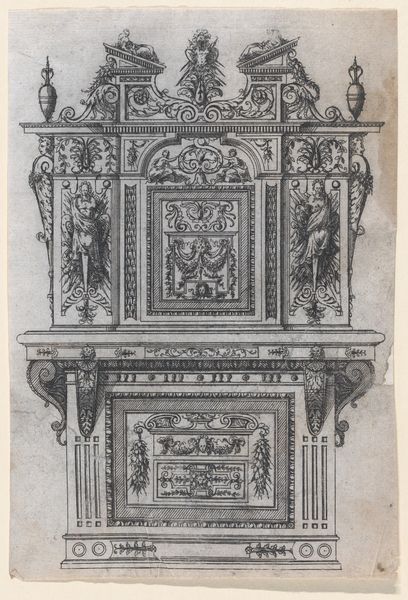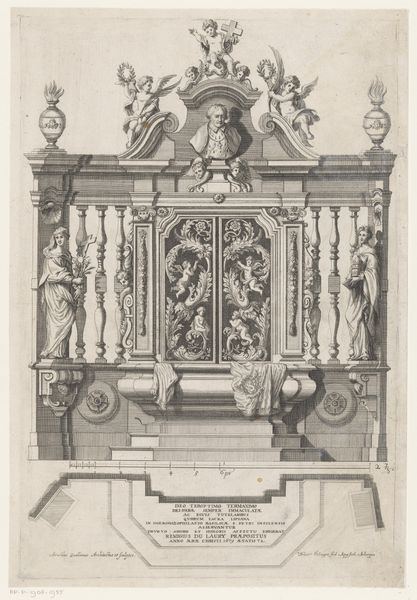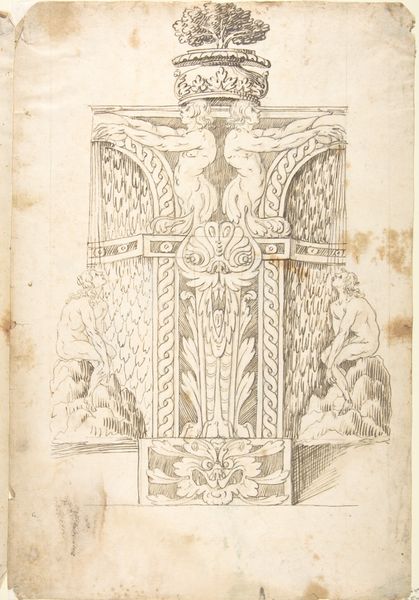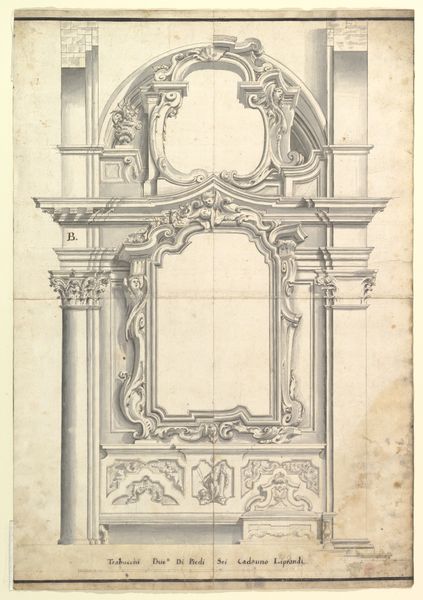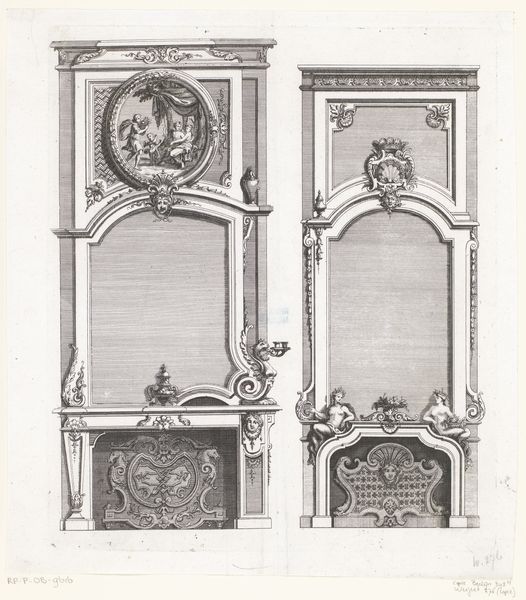
drawing, print, engraving, architecture
#
drawing
#
pen drawing
# print
#
figuration
#
11_renaissance
#
line
#
decorative-art
#
engraving
#
architecture
Dimensions: Sheet: 7 5/8 × 5 3/8 in. (19.4 × 13.7 cm)
Copyright: Public Domain
This furniture design was etched by Jacques Androuet Du Cerceau in France, sometime in the mid-16th century. This print provides a detailed elevation of an elaborate cabinet or storage unit. The design is symmetrical and heavily ornamented, reflecting the prevailing Renaissance taste for classical motifs. Prints like these were not simply artistic exercises. They served a crucial function in disseminating design ideas among craftsmen and patrons. In a society lacking mass media, printed images were vital in shaping aesthetic preferences and setting standards for skilled artisanship. Ducerceau’s meticulous rendering and the inclusion of classical figures suggest that this design would have appealed to a wealthy and educated clientele, eager to display their knowledge of classical culture. As historians, we can look at surviving examples of furniture from this period, and study architectural treatises and household inventories, to better understand the social and cultural values that underpinned such designs. What was the status of the artisan, and how did the patron commission such works?
Comments
No comments
Be the first to comment and join the conversation on the ultimate creative platform.
